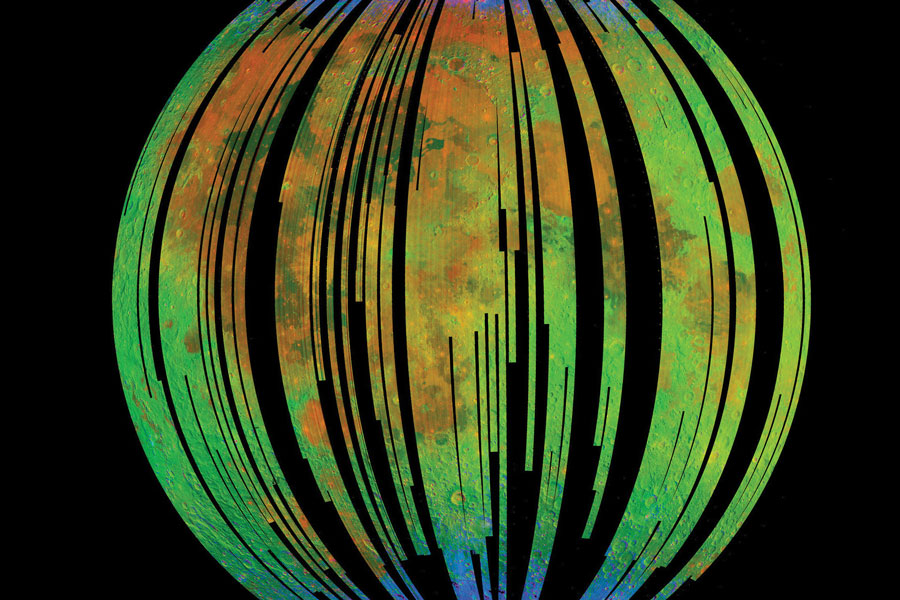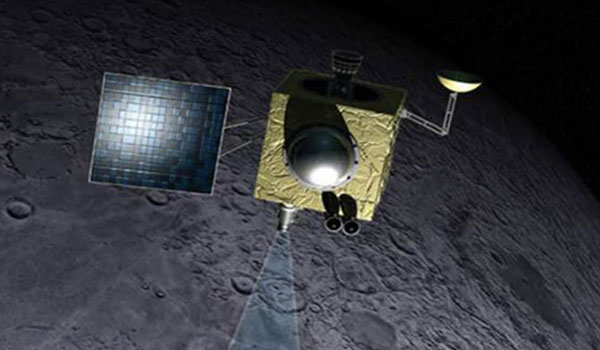Above:
The image shows the data from the M3 near-infrared spectrometer from many satellite passes. The swaths are reconstructed to form a mosaic image of the Moon viewed from one side. The small blue area around the South Pole indicates the presence of small amounts of superficial OH and H2O that are most prominent at these viewing geometries at cooler, higher latitudes.
Moon Mineralogy
Moon Mineralogy Mapper Imaging Spectrometer
JPL’s Moon Mineralogy Mapper (M3) imaging spectrometer successfully completed its mission aboard the Indian Space Research Organization’s Chandrayaan-1 spacecraft. The M3 science team reported the discovery of significant amounts of water on the lunar surface as well as accurate mapping of many minerals. Scientists will use this information to answer questions about the Moon’s origin and development and the evolution of terrestrial planets in the early solar system. Future astronauts will use it to locate resources, such as water, that can support exploration of the Moon and beyond.
M3 was enabled by a shaped-groove convex diffraction grating designed and fabricated at MDL. The grating was created to disperse wavelengths from 430 nm to 3000 nm with efficiency tailored to flatten the signal-to-noise ratio of the M3 instrument. Building on the success of M3, MDL continues to develop our diffraction grating fabrication technology to achieve new performance levels and extended wavelength ranges.
JPL's Moon Mineralogy Mapper (M3) imaging spectrometer, performed hyperspectral imaging of the lunar surface from the Indian Space Research Organization’s Chandrayaan-1. M3 utilized a grating fabricated by MDL.
+ Larger image



